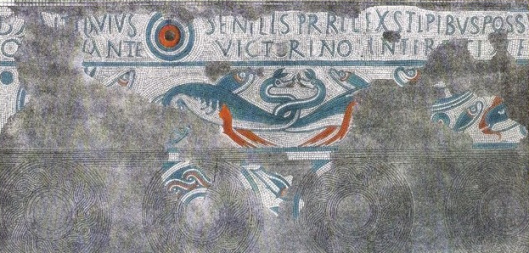I’m pleased to find The Lovecraft Geek Podcast – New Series #4 (February 2020). I missed this, earlier in the spring, but here’s the link. It’s an excellent set of questions for Robert M. Price, this time around, and he rises to the challenge.
At the end of the The Lovecraft Geek podcast Price reveals he has a new book of short stories available, Horrors and Heresies, in which horror meets various aspects of religion. Price is, of course, an expert on the Bible as well as on Lovecraft and sword-and-sorcery, so a joining of the three should be especially succulent. If you want to know more of the anthology, the podcast The Free Thought Prophet #195 recently brought him onto the show to discuss the new collection.
I can also add a couple of small pointers to the questions and answers in this latest Lovecraft Geek.
i) On the ‘Poe’ question, there’s what appears to be a strong new book The Lovecraftian Poe which would be useful for the enquirer.
ii) On the ‘Nodens’ question, I can add that Nodens was once a god in ancient Britain, and this fact had been known among antiquarians after excavations at Lydney in the 1770s and became briefly known again when an additional find was written up for publication in the 1880s. This material and the name must surely have been known to Machen. Machen’s fictional use greatly impressed Lovecraft, who wrote in a letter…
I’ll never forget that pillar raised by Flavius Senilis to Nodens, Lord of the Great Abyss
Machen having the inscription read: “To the great god Nodens (the god of the Great Deep or Abyss) Flavius Senilis has erected this pillar on account of the marriage which he saw beneath the shade.”
Lovecraft had first discovered and read Machen’s work in the summer of 1923, and Nodens then appeared in Lovecraft’s “The Strange High House in the Mist” (1926) and Dream-Quest (1926-27). It seems quite plausible to assume, as Joshi and others have, that Lovecraft had been unfamiliar with Nodens prior to 1923. My quick search of Google Books for the 19th century and for 1900-1924 confirms this strong likelihood. You couldn’t look him up in an encyclopedia, it seems.
Nodens appears to have been only a brief dalliance by Lovecraft, as there seems to be nothing lurking in the poetry. But his lack of any pursuit of the god into Dunsanian realms was perhaps timely. Since there was a flurry of publicity by 1929 around the Nodens name, which would have constrained any continued use of the name in fantastic fiction. The name and site at Lydney became closely associated with the discovery of a lost golden ring, known as ‘The Vyne Ring’, and a curse. The discovers put a call through to one Professor Tolkien, who kindly wrote a learned philological essay on the name Nodens in the light of the new finds. His essay is to be found in good form in the back of the Report on the Excavation of the Prehistoric, Roman, and Post-Roman Site in Lydney Park, Gloucestershire (1932) and reprinted in Tolkien Studies #4 (2007).
 Fourth-century inscription dedicated to Nodens, at Lydney, with sea-dragons. Note the Sauron-like staring ‘eye’.
Fourth-century inscription dedicated to Nodens, at Lydney, with sea-dragons. Note the Sauron-like staring ‘eye’.
Tolkien’s linguistic pursuit of the name led him to find a cognate across the Irish Sea in Nuada Argat-lam, he of the lost hand. There is thus a possible origin here for Tolkien’s idea of Sauron and the ring of power. Since Sauron lost a severed finger and with it his ring, and thus most of his power was lost. This key idea is not so far, at least in its basics, from a quick imaginative combination of the lost and cursed golden ‘Vyne Ring’ + the lost hand of Nuada.

Pingback: Sensor Sweep: Derleth, Elemental Evil, Tarzan, Weird Tales – castaliahouse.com
Pingback: Sensor Sweep: Derleth, Elemental Evil, Tarzan, Weird Tales – Herman Watts